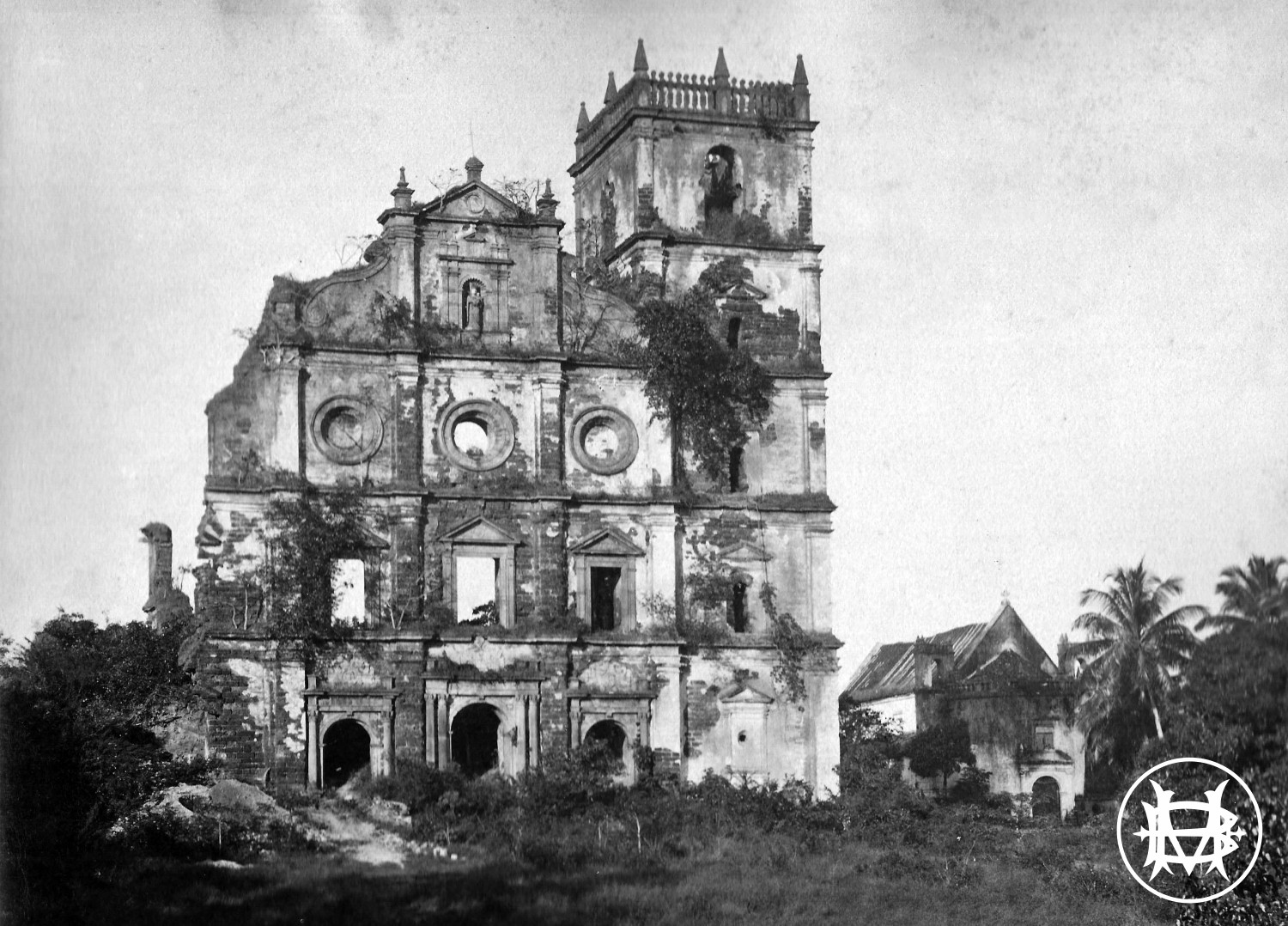

Close to the Nunnery of Santa Monica, stands a lofty tower still proudly, defying the vagaries of the weather and the ravages time. This is the only surviving tower of the four that were once a part of the Church of St. Augustine. What was once perhaps the biggest Church in Goa is now a crumbling ruin, largely deserted, with its glory days behind it. However, this ruin still has some secrets left to divulge to those who are willing to dig deep enough to find them.
Claim to fame: In 1986, UNESCO declared the ruins to be a World Heritage Site. It is also the site of the archaeological discovery of the remains of Queen Ketevan.
History, Construction and Architecture
This complex was built by the Augustinian order. It comprised the church of Our Lady of Grace, the Convent of Saint Augustine, The College of Populo, and The Seminary of St Guilherme.
The church is dedicated to Our Lady of Grace. Its construction was started in 1597 and was completed around 1602. Originally comprising of four towers and a massive vault, the dimensions of this superb edifice placed it on par with the great imperial cathedrals of the Renaissance era.
The tower which still stands is built of laterite. This great structure stands four stories high. It was intended as a belfry. The ancient bell that once resided there has since been moved, first to the Fort Aguada and more recently to Our Lady of Immaculate Conception Church at Panaji, where it remains till today.
The original Church of Our Lady of Grace once contained eight chapels, four altars and had a convent attached to it. Upon entering the church, there was a High altar backed by a richly carved retable, the whole structure being supported by soaring pillars, the vestiges of which remain visible today.
The immense vault of the church collapsed in part due to its weight, and the nave of the church is now open to the sky. There was also an immense choir loft, capable of holding a large chorus of monks.
The convent was built on three levels and once contained two cloisters, numerous corridors, pillars and galleries. The remains of a refectory i.e. dining hall, Guest house and Infirmary, all of which were very spacious, have also been found. It also had vast dormitories and numerous cells where the monks spent their day to day lives.
Abandonment and Ruination
In 1835, the Augustinians were expelled from Goa and as a result, the church was abandoned. In 1846, the main vault of the church collapsed and the convent rapidly decayed. Of all the majestic buildings, that once stood here, all that is left to see today is the belfry of the tower that soared 150 ft. high.
Legend and Lore
An old tale recounts how the vault of the church was problematic to construct and in fact fell down twice whilst being erected. The third time that it was put up, the architect, to show his confidence in his design stationed his only son within the church and ordered that a cannon be fired at the structure. Fortunately, his confidence was not misplaced, and the structure held.
Archaeological Heritage
Even though the original church lies in ruins, it becomes ever more apparent that it yet has unplumbed depths. Careful study beginning in 1990 has recently resulted in the discovery of the remains of the lost martyr, Queen Ketevan of Georgia.
Queen Ketevan was the dowager queen of Kakheti, a kingdom of Georgia. After the death of her husband, the king, her kingdom was invaded by Shah Abbas I.
Having easily conquered the kingdom, he took the Queen prisoner and she languished in Iran for almost a decade. In 1624, she was served an ultimatum by Shah Abbas I, she could convert to Islam and join his harem, or be tortured and executed. The Queen chose to die for her faith.
Accordingly, she was tortured by being stripped to the waist and having her flesh torn off with the use of red hot pincers before being strangled to death with a bow string. This took place on the 22nd of September 1624.
She was then buried, without ceremony. However she had, in her last days, befriended two Augustinian monks. These faithful men dug up her remains, smuggled them out of the country and brought them to Goa. An ancient Portuguese document suggests that the remains were entombed in a black sarcophagus and kept in the window embrasure of the convent of the Augustinian monks in Goa.
However, when the convent and church were abandoned and fell into disrepair, many of the relics were looted and plundered. The remains of the good Queen were similarly thought to have been lost. However, recent archaeological excavations have resulted in the discovery of an arm bone and other bone fragments as well as the remains of a black box. After DNA testing, these bones are believed to be the remains of Queen Ketevan.
There is little that can be seen today of the gracious and imposing church and monastery which once stood at this site, however, it is still considered worth a visit. Clambering over the old ruins causes one to reflect on the passage of time, and its vagaries.
Info: https://goa-tourism.com/augustine

